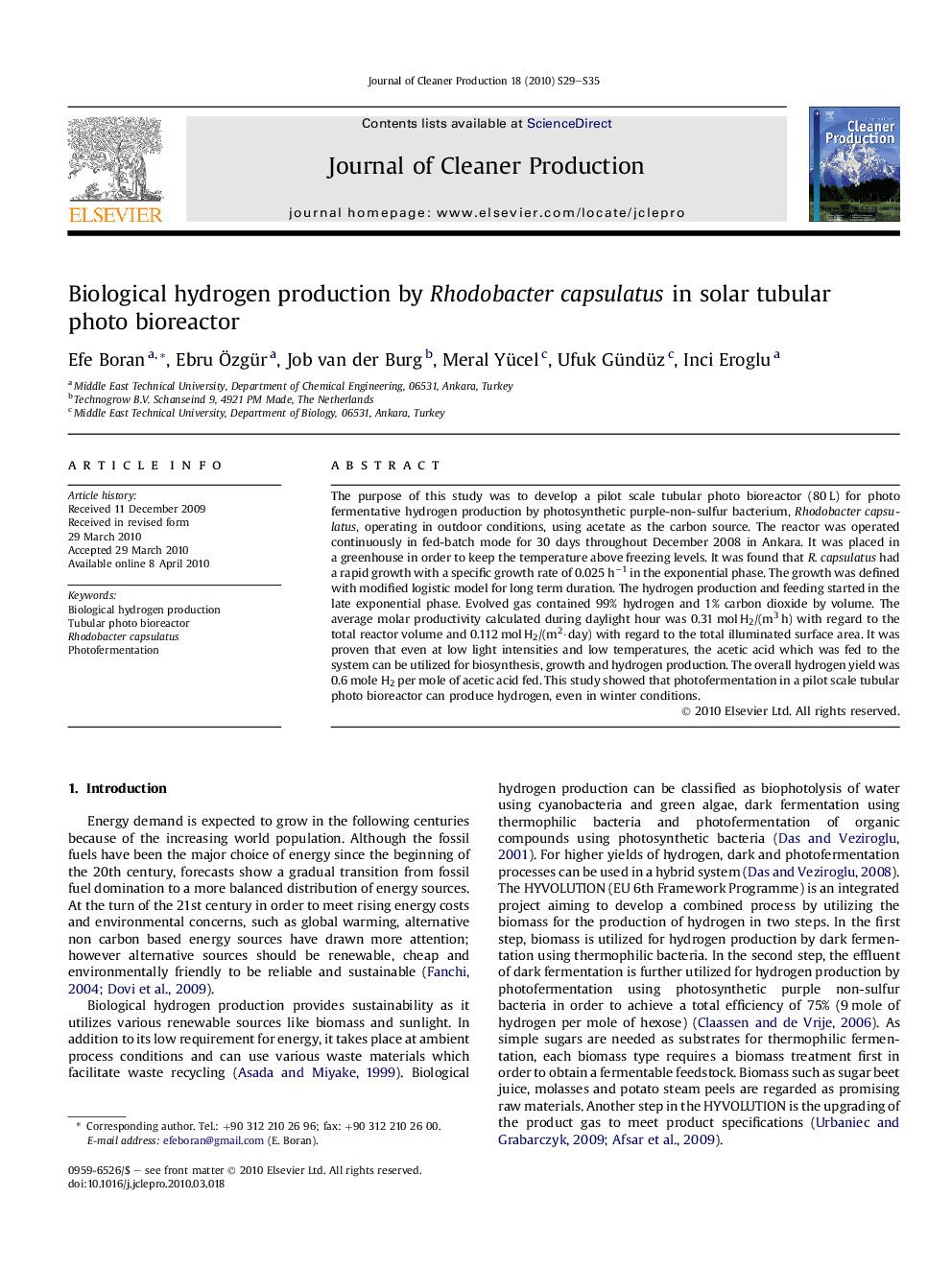| کد مقاله | کد نشریه | سال انتشار | مقاله انگلیسی | نسخه تمام متن |
|---|---|---|---|---|
| 1746637 | 1018109 | 2010 | 7 صفحه PDF | دانلود رایگان |

The purpose of this study was to develop a pilot scale tubular photo bioreactor (80 L) for photo fermentative hydrogen production by photosynthetic purple-non-sulfur bacterium, Rhodobacter capsulatus, operating in outdoor conditions, using acetate as the carbon source. The reactor was operated continuously in fed-batch mode for 30 days throughout December 2008 in Ankara. It was placed in a greenhouse in order to keep the temperature above freezing levels. It was found that R. capsulatus had a rapid growth with a specific growth rate of 0.025 h−1 in the exponential phase. The growth was defined with modified logistic model for long term duration. The hydrogen production and feeding started in the late exponential phase. Evolved gas contained 99% hydrogen and 1% carbon dioxide by volume. The average molar productivity calculated during daylight hour was 0.31 mol H2/(m3 h) with regard to the total reactor volume and 0.112 mol H2/(m2·day) with regard to the total illuminated surface area. It was proven that even at low light intensities and low temperatures, the acetic acid which was fed to the system can be utilized for biosynthesis, growth and hydrogen production. The overall hydrogen yield was 0.6 mole H2 per mole of acetic acid fed. This study showed that photofermentation in a pilot scale tubular photo bioreactor can produce hydrogen, even in winter conditions.
Journal: Journal of Cleaner Production - Volume 18, Supplement 1, December 2010, Pages S29–S35